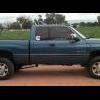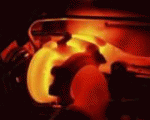- Replies 28
- Views 5.8k
- Created
- Last Reply
Top Posters In This Topic
-
leathermaneod 8 posts
-
TFaoro 6 posts
-
dripley 4 posts
-
Haggar 3 posts
Popular Days
Most Popular Posts
-
Sometimes its difficult for a guy (especially me) to understand whats going on unless I can visually see whats happening. Its a known fact that men prefer the lights on..... Anyways, poin
-
When I up shift I depress the clutch and let off the throttle completely. I do shift quicker than you, meaning i dont pause in neutral. Sometimes the tranny does not cooperate and it pauses in neutral
-
Because G56...







Hey all,
I have a couple questions about shifting. My truck (maybe most vehicles? I've experienced this with other manual vehicles), is hard to get into 2nd when I'm rolling too fast, about 10-15 mph. Too fast to get into 2nd, too slow to use 3rd. Anyway, I recently finally discovered that if I bring the RPMs up, it will go in, not as nicely as normal, but a lot easier. Maybe I just need the RPMs higher still? Is this normal? Normal for a trans with 260k anyway lol. Also, when shifting, I have always gently released the skinny pedal while gently pressing in the clutch to avoid letting off the throttle too abruptly, and avoid the jolt you get if you press the clutch all the way in too quick. Then I select a gear and begin matching the RPMs as I let the clutch out. Should I be matching the RPMs before I select a gear to be easier on things? How do you all shift? Kind of a silly question I know, but I'm wondering how all you more experienced guys shift these trucks.
Thank you!
Edited by leathermaneod